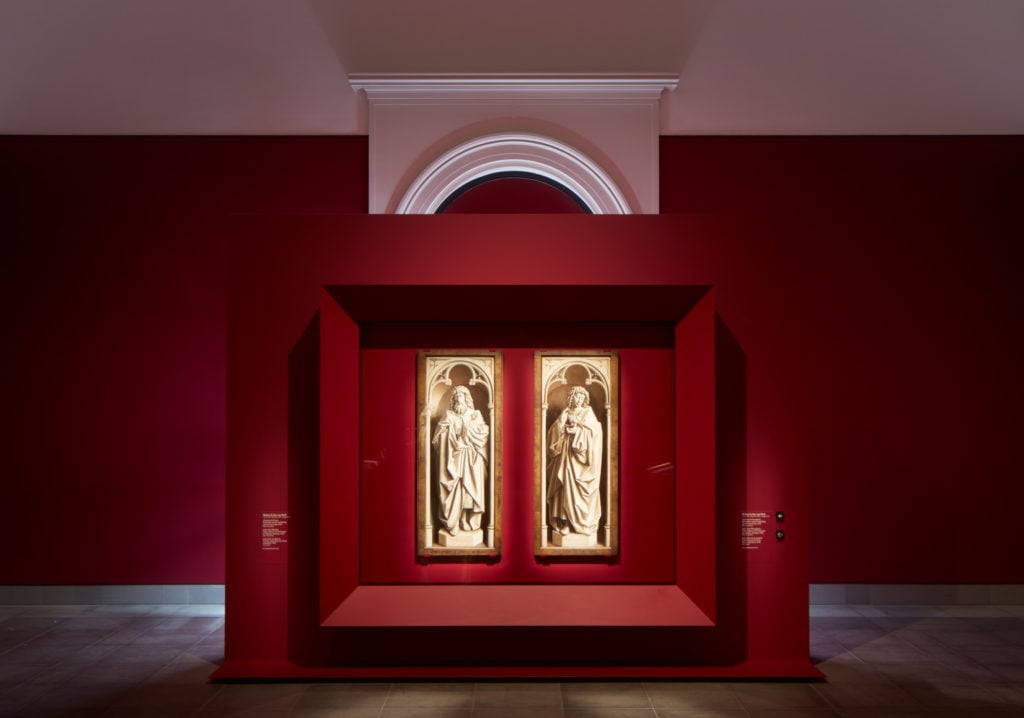Art World
A Belgian Museum Must Return $3.9 Million in Unused Tickets After Its Once-in-a-Lifetime Jan Van Eyck Blockbuster Got Cut Short by Coronavirus
The exhibition will not go back on view after museums in the country begin to reopen on May 18.

The exhibition will not go back on view after museums in the country begin to reopen on May 18.

Sarah Cascone

Museums across Belgium are preparing to reopen beginning on May 18, but at least one blockbuster show has become a casualty of the global health crisis: “Van Eyck: An Optical Revolution” will not return to the Museum of Fine Arts in Ghent.
The show, which opened February 1, was scheduled to remain on view only through April 29, and will not be extended to take into account the museum’s reopening date.
The reality of the situation became clear to the show’s organizers on April 16, when the country announced that museums would have to remain closed until at least early May.
“From that moment, it was clear that it would be impossible to reopen the exhibition,” Steven Heyse, chief of staff for Ghent’s deputy mayor of culture, told Artnet News in an email, citing the difficulties in “renegotiating loans, renewing insurances policies, security assignments, etc.”

Installation view, “Van Eyck. An Optical Revolution” at the Museum of Fine Arts Ghent (MSK). Photograph by David Levene.
In the time that the exhibition was on view, 129,000 visitors passed through the museum’s doors. But an additional 144,000 art lovers had already bought tickets, according to the Art Newspaper.
With admission priced at €25 ($27), the total cost of reimbursement could be as high as €3.6 million ($3.9 million). “The impact is currently not yet fully assessable,” Heyse said.
The museum is working with its insurance company to issue refunds to ticket holders, and will be contacting those who purchased admission.
The show’s truncated run comes as a major blow to the institution, which spent four years planning the exhibition, widely billed as a “once-in-a-lifetime experience.”
Only around 20 autographs works by Jan van Eyck are known to exist, and the museum had managed to pull together 13 of them for the occasion, making the show the largest-ever dedicated to the Flemish Old Master. Altogether, 73 collections loans objects for the show. It was the centerpiece of a citywide theme year, “OMG! Van Eyck was here,” now extended through spring 2021.
“Never say never, but it will be incredibly hard to realize this once again,” Heyse said.
The core of the show, which also included works from the artist’s studio, copies of his lost works, and other historic paintings, was the Ghent Altarpiece from St. Bavo’s Cathedral. Completed by the artist and his brother, Hubert Van Eyck, in 1432, it was once stolen by Nazis, and one panel remains missing.
Most recently, the Ghent Altarpiece was the subject of a eight-year conservation project. The last phase took three years, cost €2.2 million ($2.44 million), and was completed in December. (A surprisingly humanoid lamb subsequently went viral.)

A detail of the restored original of Adoration of the Mystic Lamb altarpiece (1432). © Lukasweb.be-Art in Flanders vzw, foto KIK-IRPA.
In the MSK exhibition, “the panels were displayed outside the cathedral for the first and last time in history,” Heyse said. “The public was able to see the restored exterior panels of the Ghent Altarpiece for the first time in original condition, alongside the other masterpieces, exactly as they were seen by contemporaries of Van Eyck.”
Seeing some of the panels outside the cathedral was all the more significant because the church keeps the altarpiece under glass, more than five feet aways from the viewer. The cathedral was among 73 collections that had loaned objects for the show, including London’s National Gallery and Berlin’s Gemäldegalerie.
“All of them were informed immediately about the closure of the exhibition and asked to consider an extension of their loan for the duration of the interruption of the exhibition,” so that the museum wouldn’t have to worry about deinstalling or shipping works during a government-mandated shutdown, explained Heyse. But there was just no way to extend the loans beyond that.